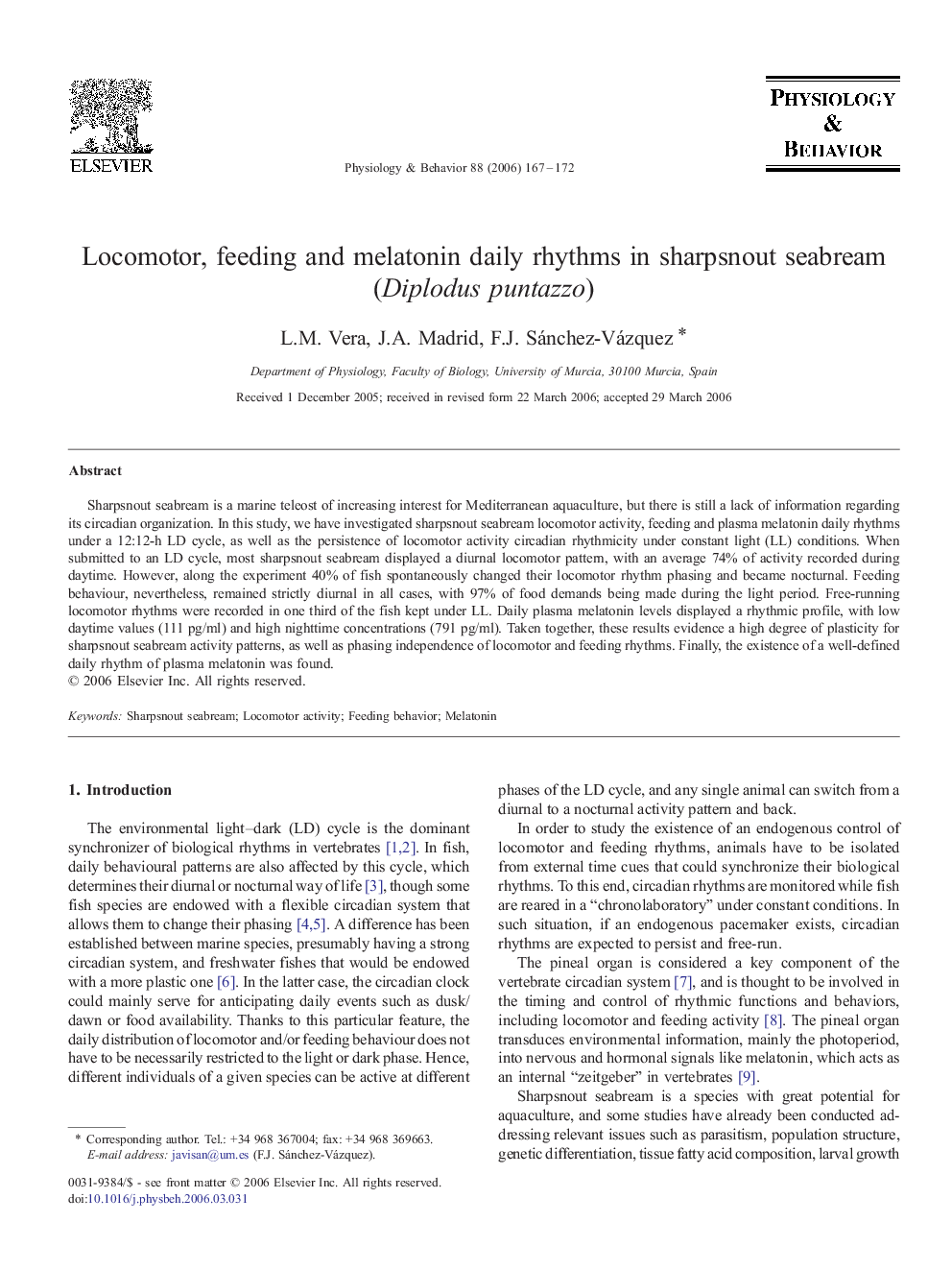| Article ID | Journal | Published Year | Pages | File Type |
|---|---|---|---|---|
| 2846407 | Physiology & Behavior | 2006 | 6 Pages |
Sharpsnout seabream is a marine teleost of increasing interest for Mediterranean aquaculture, but there is still a lack of information regarding its circadian organization. In this study, we have investigated sharpsnout seabream locomotor activity, feeding and plasma melatonin daily rhythms under a 12:12-h LD cycle, as well as the persistence of locomotor activity circadian rhythmicity under constant light (LL) conditions. When submitted to an LD cycle, most sharpsnout seabream displayed a diurnal locomotor pattern, with an average 74% of activity recorded during daytime. However, along the experiment 40% of fish spontaneously changed their locomotor rhythm phasing and became nocturnal. Feeding behaviour, nevertheless, remained strictly diurnal in all cases, with 97% of food demands being made during the light period. Free-running locomotor rhythms were recorded in one third of the fish kept under LL. Daily plasma melatonin levels displayed a rhythmic profile, with low daytime values (111 pg/ml) and high nighttime concentrations (791 pg/ml). Taken together, these results evidence a high degree of plasticity for sharpsnout seabream activity patterns, as well as phasing independence of locomotor and feeding rhythms. Finally, the existence of a well-defined daily rhythm of plasma melatonin was found.
